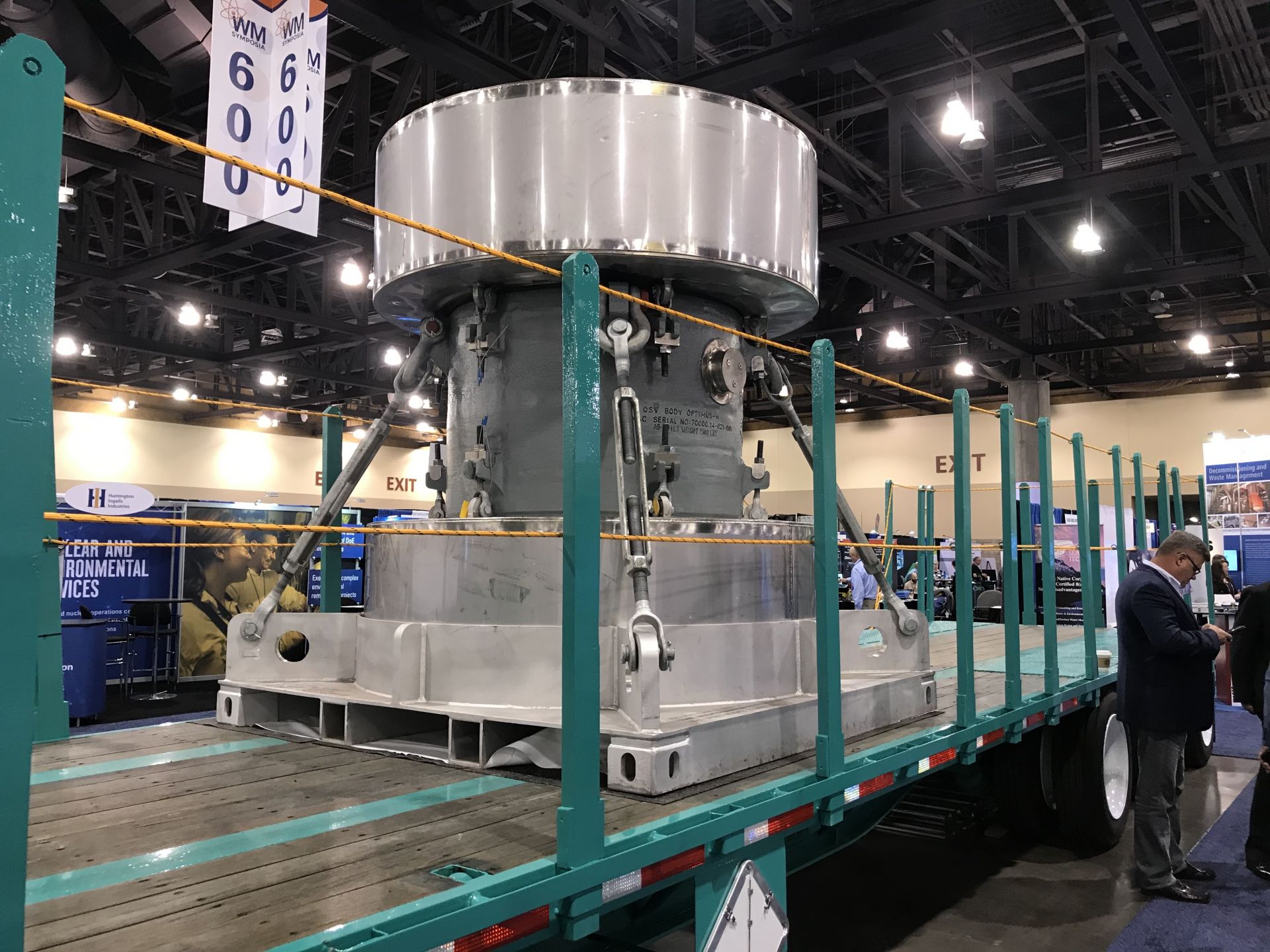ICP crews inspect transuranic waste drums to ensure they comply with shipping requirements. (Photo: DOE)
The Department of Energy’s Idaho Cleanup Project (ICP) has improved transuranic waste operations to address aging waste containers being stored at the Advanced Mixed Waste Treatment Project (AMWTP) at the Idaho National Laboratory Site, the DOE’s Office of Environmental Management announced on December 10.
A 125-foot-tall exhaust stack towers over the Safety Significant Confinement Ventilation System’s filter building at the Waste Isolation Pilot Plant. (Photo: DOE)
The Defense Nuclear Facilities Safety Board (DNFSB), an independent government organization responsible for overseeing public health and safety issues at Department of Energy defense nuclear facilities, has alerted the DOE because of safety concerns it has regarding the use of continuous air monitors (CAM) at the Waste Isolation Pilot Plant in New Mexico.
Part of WIPP’s new Safety Significant Confinement Ventilation System (SSCVS), the CAM system is intended to detect a radiological release in the repository and automatically close vent dampers to prevent the escape of radioactive particles to the outside environment. The SSCVS, which began commissioning in November 2023, is intended to increase airflow to the underground to allow for simultaneous underground waste emplacement, mining, and ground control work.
The Galloway is lowered into the utility shaft at WIPP. (Photo: DOE)
Progress continues on a new utility shaft at the Department of Energy’s Waste Isolation Pilot Plant in New Mexico as shaft-sinking crews recently surpassed the midway point at a depth of 1,076 feet. When complete, the full shaft depth will be 2,275 feet, with the team now halfway to the WIPP repository depth of 2,150 feet.
A shipment of transuranic waste approaches WIPP in New Mexico. (Photo: DOE)
According to the Department of Energy’s Office of Environmental Management (EM), shipments of transuranic waste to the Waste Isolation Pilot Plant in New Mexico are back to pre-pandemic levels, with the deep underground repository receiving 12 shipments in one week this summer.
Producing packages for radioactive materials takes time, attention to detail, and a thorough commitment to quality assurance.

The Optimus-H transport cask on display at the 2020 Waste Management Conference in Phoenix, Ariz.
Jeff England, director of transportation projects for NAC International, pointed to the large stainless steel canister, which looked like a giant-sized silver dumbbell, perched on the flatbed of a semitrailer truck parked in the middle of the expansive exhibit hall in the Phoenix Convention Center. NAC, a provider of nuclear storage, transportation, and consulting services, was using the 2020 Waste Management Conference, held March 8–12 in Phoenix, Ariz., to unveil its newest transport casks, the Optimus-H and Optimus-L.
“These are a different niche,” England said of the casks, which were designed to transport radioactive materials, including remote-handled transuranic waste, high-activity intermediate-level waste, low-enriched uranium, and fissile materials. “You have a lot of [small] drum-sized packages, and you also have a lot of big packages that will hold around 10 55-gallon drums. But there’s not anything in between. We hold a 110-gallon drum capacity.”





